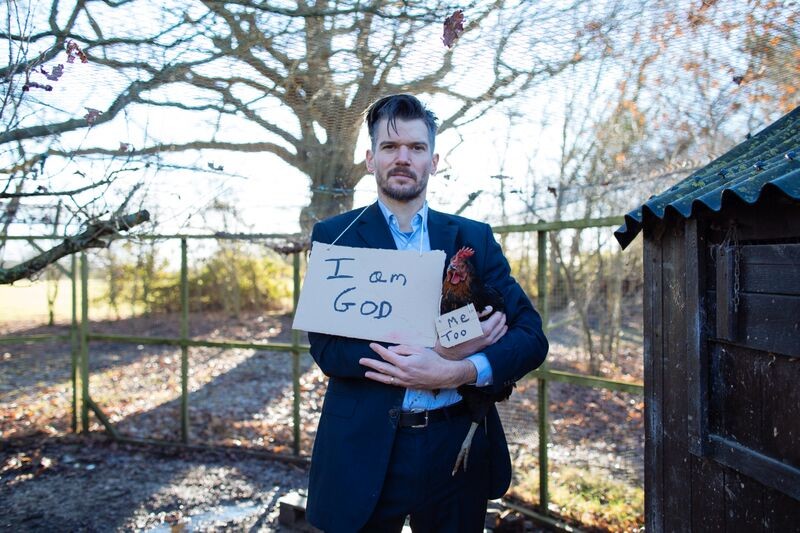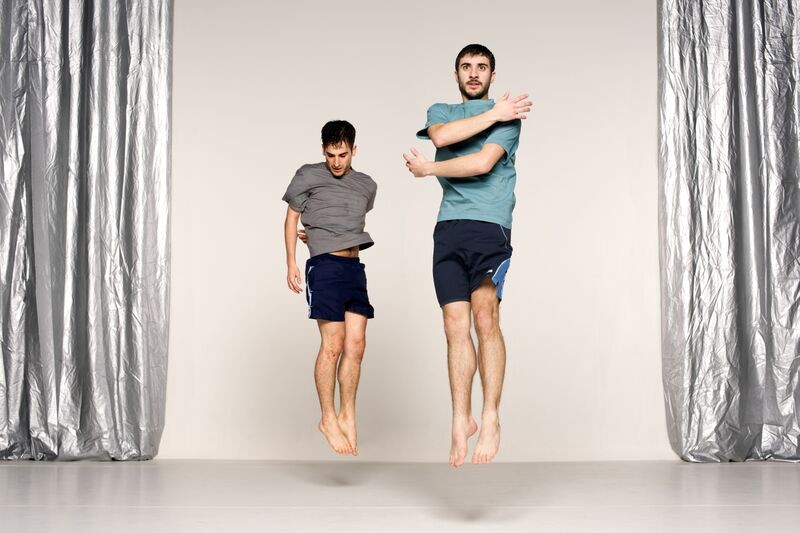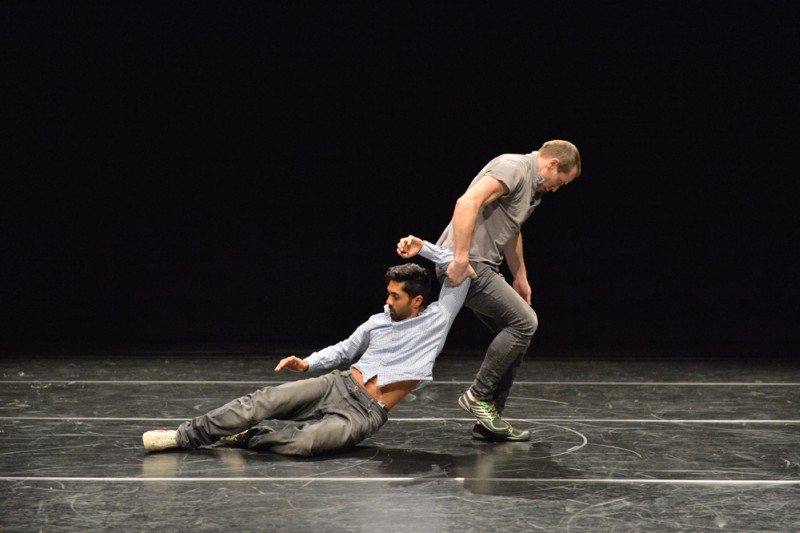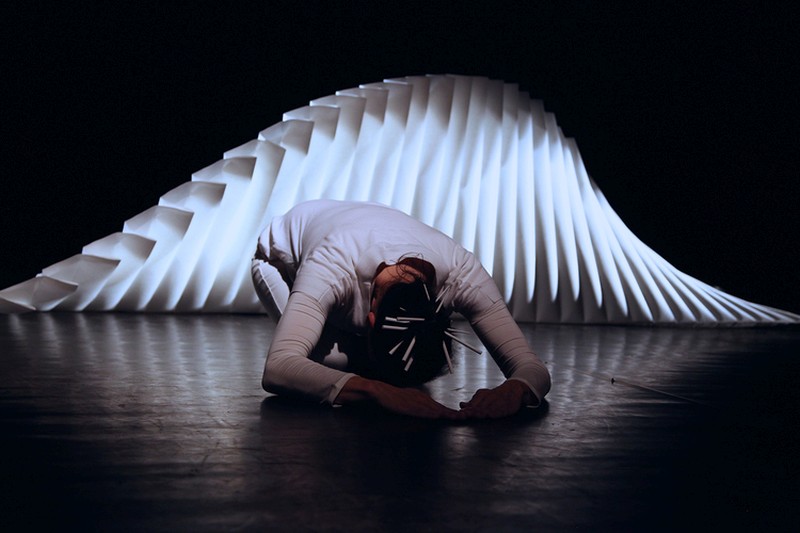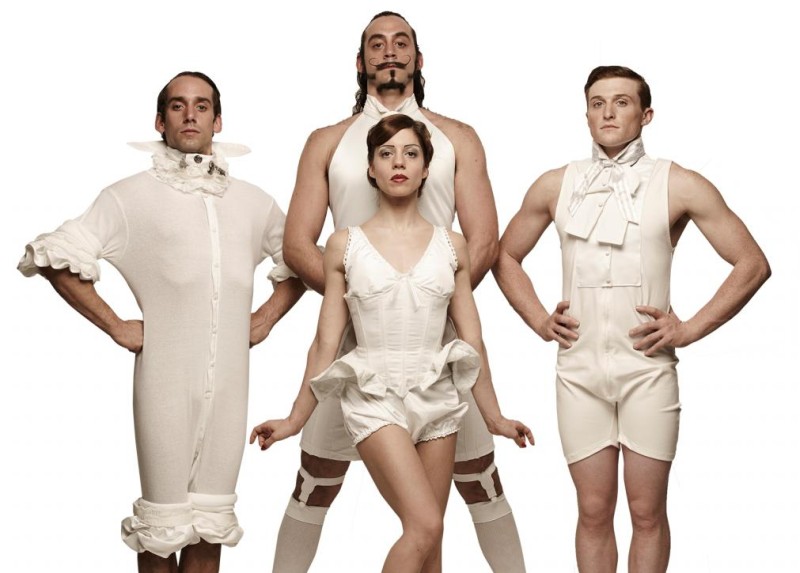 I was disappointed. I was embarrassed for the company. I was looking around for an exit. And then suddenly I was drifting through the riches of pure acrobatic bliss. The Elephant in the Room is awful and then it is breathtakingly brilliant.
I was disappointed. I was embarrassed for the company. I was looking around for an exit. And then suddenly I was drifting through the riches of pure acrobatic bliss. The Elephant in the Room is awful and then it is breathtakingly brilliant.
The concept of the performance is to blend film noir, physical comedy, and circus into a single theatrical circus show. From the beginning the noir film titles were a fun idea, but messy and difficult to read on a textured backdrop. Then early in the show the focus was on physical comedy, which occasionally succeeds but frequently falls flat. But more than the physical comedy, director Charlotte Saliou sadly has the acrobats speaking boring, over-extended dialogue that is spoken too quickly and quietly against a much stronger musical score, and lacks bite, humor, or clarity. There is some fun in the dialogue, as they occasionally throw in a salty French word that holds its own with the flair and power of the overall production values.
I hoped things would get better, but, to be honest, I wasn’t holding my breath. To my great joy, after the first roughly 20 minutes, there was nearly no more speaking, and the world-class acrobatics took stage front-and-center. And when I say world-class acrobatics, the hand balancing and partner balancing acts presented here could hold their own technically and artistically with the best in the world. After the slow, tedious start, Elephant blossoms into a majestic, sensual buffet of acrobatic wonder.
Philip Rosenberg, Gregory Arsenal, Lolita Costet, and Yannick Thomas, the four-person company, perform acrobatic sequences alone, in various combinations, and finally all together, with the skill, flair, and playfulness that marks them as masters of their art. Saliou redeems herself in spades with adept artistic direction in perfectly drawn sequences that make acrobatic virtuosity silly and sexy in equal measure. The acrobatic bliss carries beautifully for a solid 40 minutes, and left the audience leaping to their feet. Of particular note is a hand balancing duet that features Rosenberg and Arsenal with hints of dance, homoeroticism, and some of the most exotically perfect hand-balancing images in recent memory.
Once I picked up my jaw off the floor, Elephant left me giddy with appreciation for their circus voyeurism, courage, and dazzling skill. And even those first few unfortunate minutes couldn’t wipe the grin off my face.

